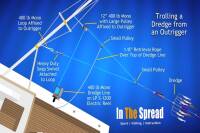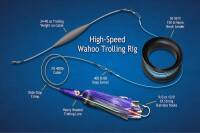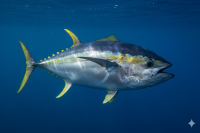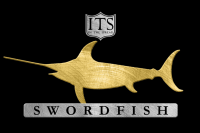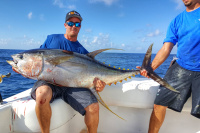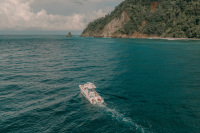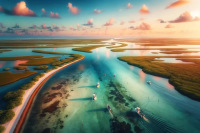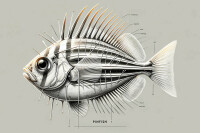Explore the Adriatic Sea's abundant fishing opportunities with expert tips for success. Learn about prized catches like European Dentex and Sea Bass, optimal locations from Istria to offshore islands, essential equipment, and effective bait choices. Make your Mediterranean vacation unforgettable by combining pristine fishing spots with stunning coastal destinations.
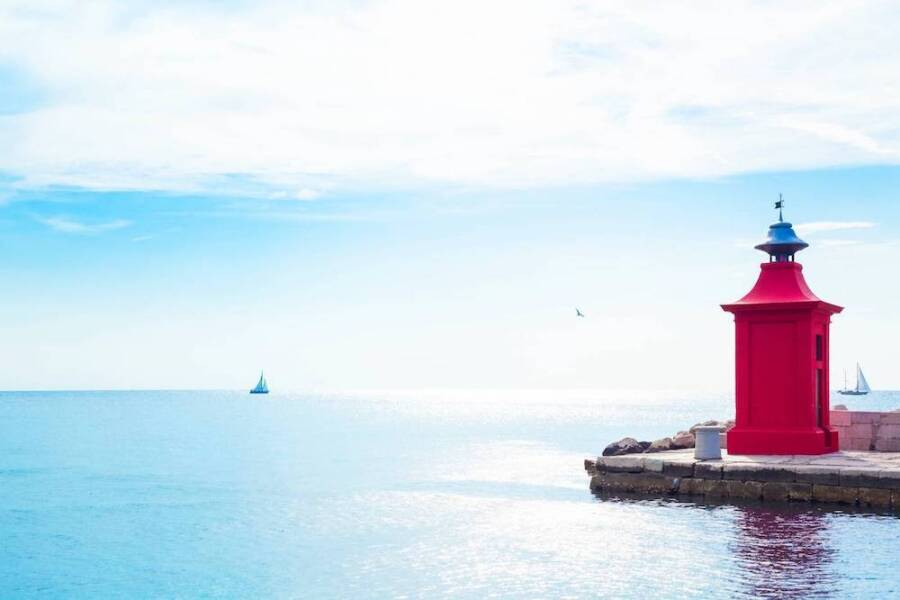
How to Fish in Adriatic Sea? Best Short Tips!
Expert Tips for Fishing in the Adriatic Sea with Success
Fishing has been my passion since I was a little kid. In my home country, Slovenia, you can find wild rivers and numerous lakes that offer spectacular fishing opportunities.
Whenever the opportunity arises, I like to engage in some saltwater fishing too, and the best, and the closest location to do so is the Adriatic Sea. Both Slovenian and Croatian parts of the Adriatic are excellent tourist destinations, so you can combine the best of both worlds - enjoying beautiful beaches, historic coastal towns, and fantastic fishing experiences.
To find more articles about local fishing opportunities, and fishing in general, visit my fishing blog, where I share my experiences and tips, especially for beginners.
How to Fish in Adriatic Sea: Best Short Tips!
I could write a book about how to fish in the Adriatic Sea, but here I am going to share just basic tips. When you arrive at the destination, you will figure out the small details by yourself, and that is one of the best parts of fishing!
#1: Get to know the local fish species
The Adriatic Sea is known for its healthy and large fish population, with dozens of species you can catch. These species are quite different, living in various habitats, having different activity periods, and preferring certain baits.
Among locals, European Dentex (Dentex dentex), European Sea Bass (Dicentrarchus labrax), and Sea Bream (Sparus aurata) are considered to be the best catches. It's not easy to catch them, but it's very exciting and rewarding. Plus, all of these species taste great when properly prepared.
Sea Bass can be caught in various places, but some of the best ones are in Istria. The best thing about Sea Bass is that there is no closed season for them, and you can catch them year-round. They typically weigh between 0.5-3kg (1-6.5lbs) but can grow up to 10kg (22lbs).
Dentex can easily be caught from the shore during summer months when it comes close to the shallows and can be found in depths between 5-40m (16-130ft). They're powerful predators that can weigh up to 16kg (35lbs), providing an exciting challenge for anglers.
#2: Consider night fishing
When the days are hot, you should relax at the beach and wait for the night. If you are in a mood for a real challenge, try to catch the Conger (Conger conger).
These clever predators can grow really large, reaching lengths of over 2 meters (6.5ft), and when they bite, it is an adventure to get them out before they hide in a tight hole within a rock. For this, you will need strong equipment and a lot of patience.
Wintertime on the Adriatic Sea offers night fishing opportunities worth exploring. At this time of the year, Squid (Loligo vulgaris) become very active. To catch them, you will need a squid lure and, of course, a boat. When you find the right location (and you can follow the locals to do so, because they will never tell you directly), it's quite easy to catch them. Even kids can do that, so you can take the whole family out for an adventure.
#3: Choose the best location
The Adriatic Sea may be surrounded by small countries, but the shoreline is very long! There are thousands of bays, peninsulas, and other landscape features that make it so good for fishing. Hundreds of islands from north to south offer some spectacular fishing sites, as well as historical locations and charming cities.
Depending on your priorities, choose locations with fewer tourists, away from larger cities, to enjoy some solitude and fishing in pristine nature. Piers in small towns and villages can be a good start.
One of the best areas for shore fishing is Istria, which is a peninsula in the northern part, and of course, the surrounding islands, like the Krk island. For those interested in offshore fishing, I would recommend island Murter, and the surrounding area. The Dalmatian coast, especially around Split and Dubrovnik, offers excellent fishing opportunities with its numerous islands and channels. You can find more info about specific locations at my website.
Popular fishing spots include:
- Kornati Islands National Park - for pristine waters and diverse fish species
- Rovinj and Poreč coastlines - excellent for shore fishing
- Lošinj and Cres islands - known for big game fishing
- Zadar archipelago - great for both shore and boat fishing
- Split channels - perfect for night fishing
#4: Get the right equipment
The beauty of fishing in the Adriatic Sea is that you can catch smaller fish with just basic equipment and a bit of luck.
But those who are targeting specific species will have to use proper equipment. I assume that this is mostly done by experienced anglers, who know what to use, so I will mention just a basic setup, which is sufficient for shore fishing and catching species like Gray Mullet, Black Scorpionfish (be careful not to impale yourself on their spines), Common Pandora, and similar fish.
Get a 3-3.5m (9-11ft) long rod, with a medium size, about 3000, spinning reel. Use mussels or pieces of small fish as baits, and find a secluded location on the shore, far away from the crowds. The bottom should have features like rock formations or weeds, in addition to the sand. You should avoid places that are covered with sand only.
Also avoid calm and sunny days, and fish when there is a bit of wind, or even better, during a cloudy day when fish tend to feed more actively.
- Medium to heavy action rods (7-8ft)
- Larger reels with higher line capacity
- Strong fluorocarbon leaders (40-60lb)
- A variety of artificial lures including jigs, poppers, and soft plastics
And for those who plan to keep the fish, take a portable fridge with you to keep your catch fresh!
#5: Choose your baits wisely
Locals may be friendly towards tourists, but they will never tell you their secrets about fishing. So, when it comes to the best baits, you will have to figure it out on your own.
However, I recommend using Bobbit Worms (Eunice aphroditois). They are huge, and you can either buy them, or catch them yourself. Many fish species will gladly bite. You can use it for shore fishing to catch one of the species mentioned in the previous chapter.
Another good bait is Mediterranean mussels, and Sea Breams love them. Just make sure you carefully attach them onto the hook, because they have a tendency to slip.
Besides those, you can use whole or pieces of small baitfish like European Pilchard (Sardina pilchardus) and European sprat (Sprattus sprattus), or even Squid or Cuttlefish. European dentex can be caught on these.
Prawns are used for catching species like European Sea Bass.
Artificial lures that work well in the Adriatic include:
- Silver and blue spinners for Mackerel
- White and red soft plastics for Sea Bass
- Squid jigs in various colors for night fishing
- Deep diving crankbaits for offshore species
#6: Make safety your priority
The Adriatic Sea is generally considered safe, and you do not have to be afraid of the creatures living in it, except for Weever fish (Trachinus draco), which is venomous with painful but rarely dangerous stings.
But you should keep an eye on the weather forecast, especially during night or when on a boat. Severe thunderstorms can occur, especially in the northern part.
Another danger can be the Bura wind, which is extremely strong and can be very dangerous if you are in the open sea. This cold, gusty northeastern wind can reach speeds over 100 km/h (62 mph) and develop quickly, creating dangerous conditions for small boats.
If you are unsure about the conditions, ask the locals, they all know it very well, and will gladly help you. Most coastal towns have fishing tackle shops where staff can provide valuable information about local conditions and regulations.
#7: Understand fishing regulations and licenses
Before casting your line, make sure you're aware of local fishing regulations. Both Slovenia and Croatia require fishing licenses for recreational anglers. These can typically be purchased:
- Online through official government websites
- At tourist offices in coastal towns
- At fishing tackle shops
- At marina offices
Prices vary depending on the duration (daily, weekly, monthly, or annual). Some protected areas may have additional requirements or restrictions. Currently, a basic daily recreational fishing license in Croatia costs around €10-20, while weekly licenses range from €30-60.
Conclusion
The Adriatic Sea is one of the most popular tourist locations in Europe, and more and more people come every year to explore it. Many of them are recreational anglers who want to try and learn how to fish in the Adriatic Sea.
Choose the best location in accordance with the fish you are trying to catch. The same goes for your fishing equipment.
Don't forget the fishing license, which is required for all anglers, no matter where they come from. Follow the local rules, regulations and enjoy the experience!
With its crystal-clear turquoise waters, abundant marine life, and breathtaking coastal scenery, fishing in the Adriatic offers not just great catches but a truly memorable Mediterranean experience that combines sport, nature, and relaxation in one of Europe's most beautiful settings.
Login
to leave a review.
User Reviews
There are no reviews yet.Complete Dredge Pulley Setup Guide
Saltwater
12.28.2020
High Speed Wahoo Trolling Rig
Saltwater
09.07.2018
Best Bait for Wahoo
Saltwater
12.30.2023
Pinfish - A Comprehensive Guide
Saltwater
11.10.2023
0

